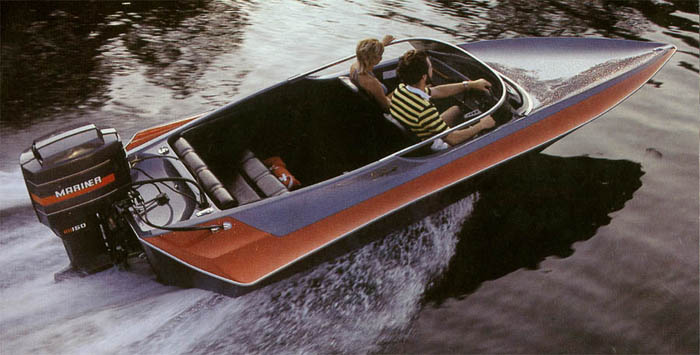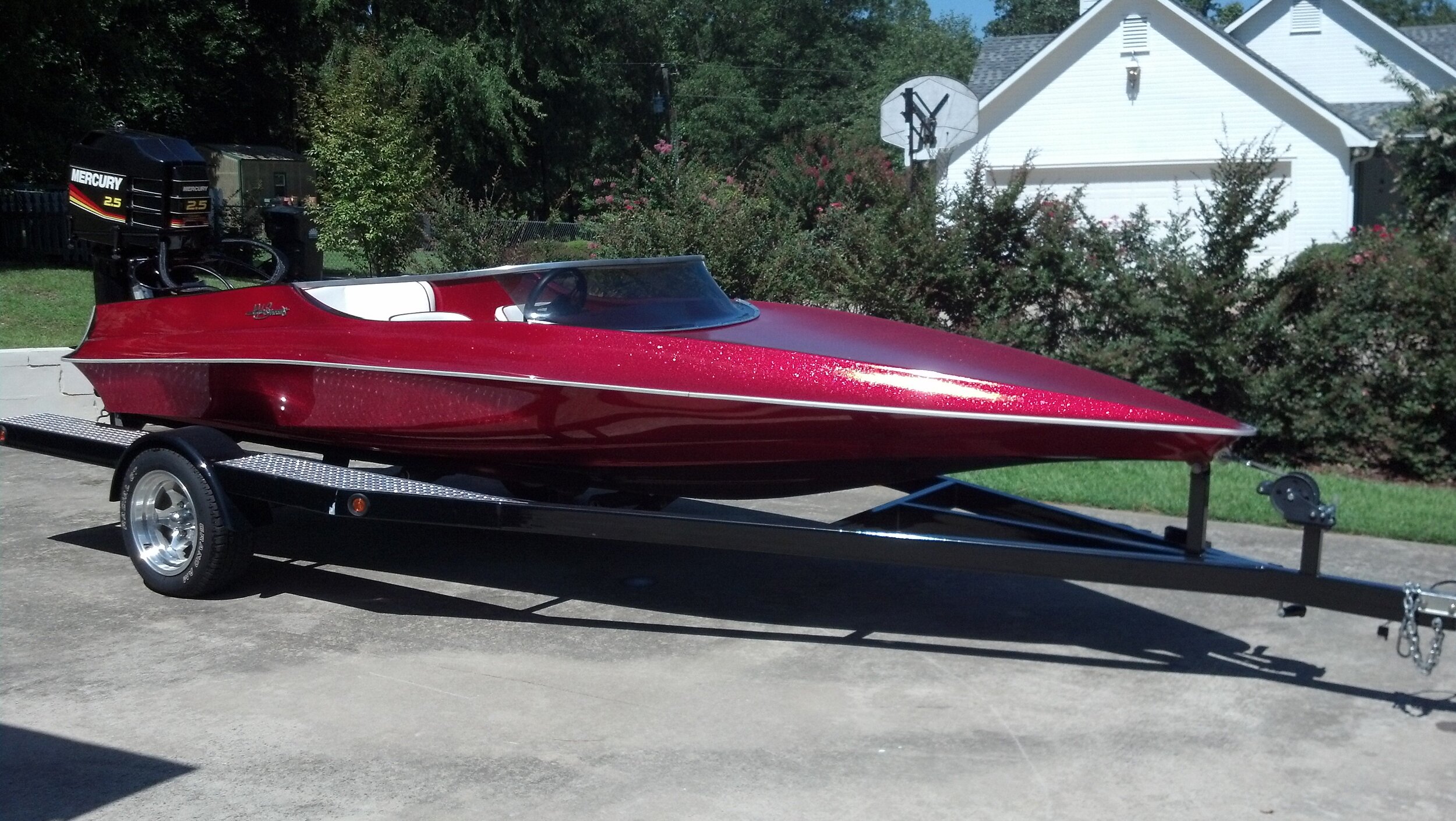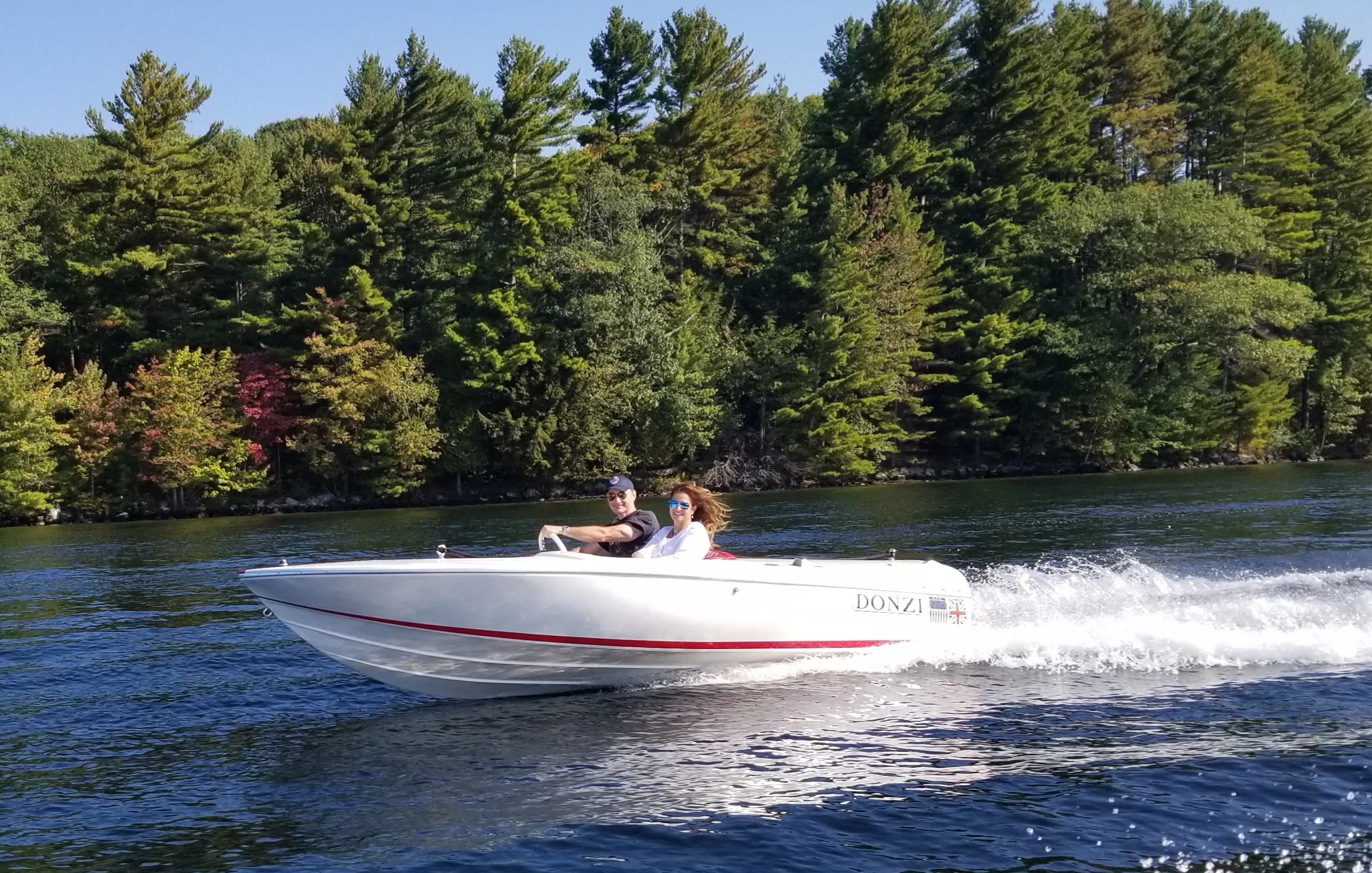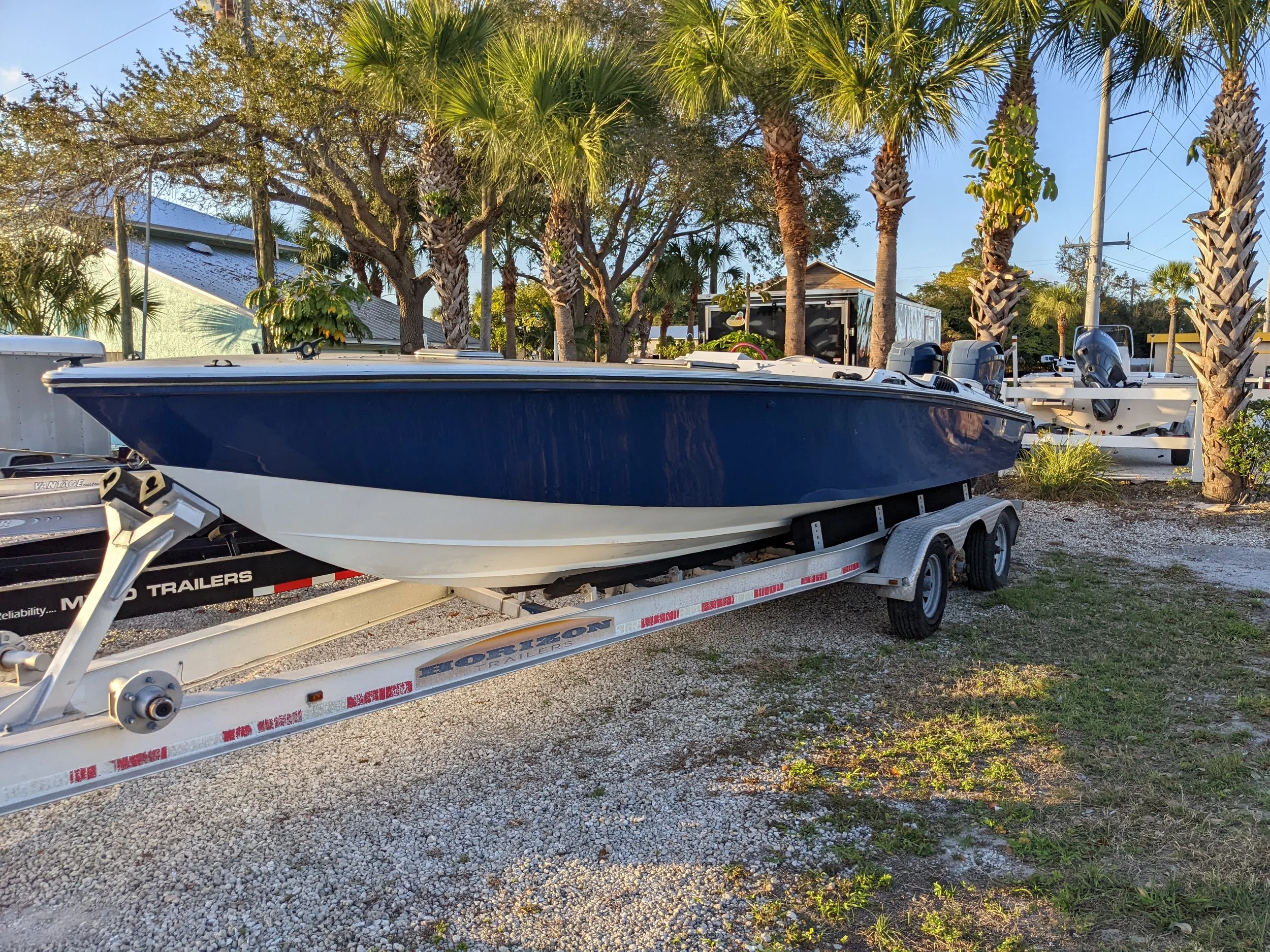Howard Pipkorn and the Vision Behind Hydrostream
There is so much to say about Hydrostream boats that it might be next to impossible to get everything in one article. One thing is for sure though, not many boat companies were as identifiable and prolific as Howard Pipcorn’s Hydrostream boats. They covered so much ground; from being many peoples first race boat, first performance boat to a boat that many people kept in the family for generations. You can’t be into performance boats and not have been aware of how impactful Hydrostream was to the industry. Innovative design, clear branding and several quirky things made the company form Minnesota such a remarkable success for so long.
I do remember seeing the Hydrostream display at a boat show when I was a kid, probably in the mid eighties, and I remember a blue metal flake Hydrostream Vision that caught my eye. Even at a time when sport boats were popular and everyone was using flake, wild colors and sleek designs, the Hydrostreams stood out. There is something about the signature concave deck, winged rear and wrapped windshield. Not every Hydrostream had all of those design cues but most of the early recreational ones did. There were quite a few Hydrostreams around where I grew up, not far from the companies home of Minnesota.
Like many other boat building entrepreneurs at the time, what started as a love for racing small boats, Howard Pipkorn ended up building a brand that has incredible staying power to this day. There are a few factors that led to this and one is design. Pipkorn utilized concave shapes, curves and wings in an effort to not just look cool but to improve strength and performance.
Race
Credit to Scott March: The race boats had no windshield and were “potato chip” layups but fast. That’s aired out.
Although now it’s easy to criticize some of the quality in the build of most of the original Hydrostreams, you have to remember the limitations of the products available and the understanding of boat building back then was not like we have today. Pipkorn was simply trying to innovate with the limited products available and tried many things to make his boats stronger and lighter.
The Hydrostream boat company started in 1968 with some boats that weren’t completely original, like the Hustler, but quite soon after, Pipkorn developed his own designs and with other people like Ron Baker to become one of the most prolific performance boat builders of the time. Some early models like the Ventura, Viper and Vector really set the tone for the boat company. The secret sauce was that Hydrostreams were truly boats you could race one day, and take the family skiing the next day. Streams were priced and powered in a way that many working people could afford; they were cool, fast and fun.
An old Hydrostream brochure featuring one the companies most recognizable models the Vector. A stunning looking boat even today. Credit hydrostream.org
Today it’s common to see really powerful engines on the transoms of almost all models of Hydrostreams but most early seventies models were designed for 90 to 125 HP engines of the time, the V6 engines were just taking off in the late seventies and the timing was pretty good for Hydrostream in that respect. Popular models like the Vision, Vector and Viper didn’t need a ton of power to really fly but the later models were made to run with bigger power.
A classic Hydrostream Viper with what looks like a late 70s 850 Mercury.
As much as the early seventies helped build the brand and reputation, I think it was the mid seventies that saw a few things happen to push Hydrostream and other boat companies into high gear. The first was that racing became more popular and competitive which spawned a lot of competition and ushered in new designs. Ron Baker joined Hydrostream boats around 1975 and really was a part of the racing, hull design innovation and the push for mainstream success. Another factor that made this possible was the debut of the V6 outboards from Mercury Marine and OMC Johnson / Evinrude in 1976. Both manufacturers had horsepower options up to 135 HP up to that time, and the crossflow V4 OMC outboards were great engines, as were the straight six Mercs, but the new V6 platforms were going to make much more power, allowing for much greater speeds, where Hydrostream really shined. This is when some of the most venerable names and designs in performance boats emerged.
In the quest to be faster, Ron Baker and Howard Pipkorn really pushed things with the model that was a direct response to the V6 engines; the Viking, later changed to V-King. Now, I don’t claim to be a Hydrostream expert by any stretch, there are many experts out there, and the model lineup was very extensive, but I feel confident saying the Viking / V-King is one of the best Hydrostreams built in terms of design, overall performance and just being a quintessential Hydrostream. While the Vector, Ventura and Viper among others are classics in their own right, the V-King seemed to nail almost everything. They are very fast with big power and seem to have perfect proportions. The later YT model, center pod design, is also incredibly fast and has the stability a center pod can provide.
*Credit to Scott March: An old Ron Baker Hydrostream race boat with the orgins of the YT hull. Different versions had different center pod to sponson heights.
Baker and Pipkorn were always refining and redesigning hulls, experimenting with strakes, pad width, hooks, wedges and other “tricks” but I believe the V hull V-king might be the best out of the box. One thing that is funny to mention is how Pipkorn used almost every V word out there to name his boats.
Later, the Mod VP racing took off, and center pod tunnels emerged as a prominent design and in some cases offered a safer high speed experience, depending on the boat of course.
Credit proptalk.com: An old Hydrostream restored to race.
Hydrostream became the serious boat enthusiasts boat to fall in love with. To drive one took some skill, and they were a no frills boat, only the features you needed with no fluff. This made the brand out live the business which was attempted to be rejuvenated a couple times after Pipkorn stopped building them. There was an arrangement with builders up North called Canadian Edition that produced some good quality versions of a few models. Other variations of the brand formed with new designs in Tennessee but boat building is a tough business.
Howard Pipkorn was an entrepreneur outside the boat building world and although he left the boat business, he did race for quite some time after and I believe he was and is a big part of the Twin Cities Powerboat Club. Hydrostream was a successful boat business while it ran. Not many brands have the lore they do, and not many boat companies have the loyal following, dedicated ownership group or as many restored models on the water. Mr. Pipkorn built an amazing brand and was truly a visionary boat builder.
Credit Scott March: An old race photo. You can see the aero cowl on the rear deck.
A beautiful Vector we featured in our restorations. Link here Vector Restoration














